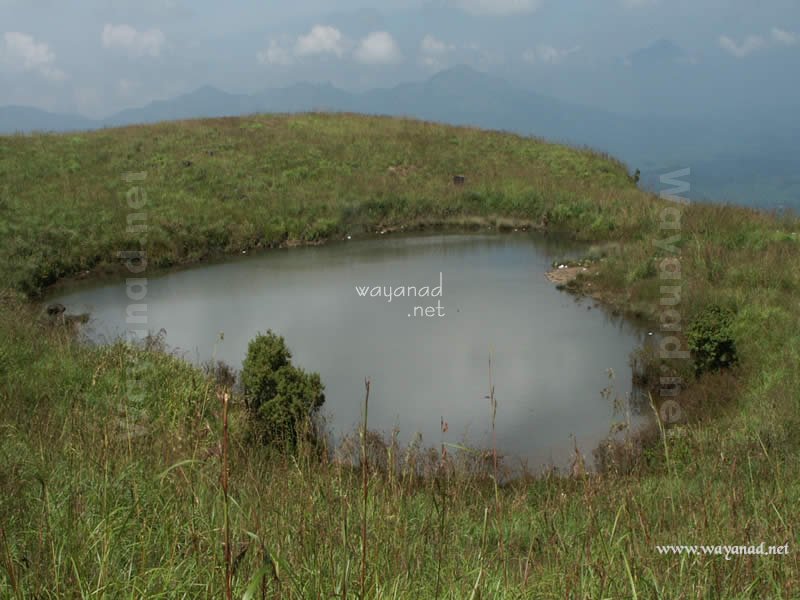Sulthan Bathery
Sultan Bathery, also known as Sulthan’s Battery lies approximately 25 kms. from Kalpetta. Associated with Hyder Ali and Tipu Sulthan, Sulthan’s Bathery no longer has a fort. It is worth visiting for the Jain temple, which has some interesting stone carvings. Sulthan Bathery can be seen on a drive from Kalpetta to Wayanad Wildlife Sanctuary, Muthanga.
Edakkal caves – 12 kms from Sulthan Bathery. 3 caves are located at a height of 1000 mts on Ambukuthi mala near Ambalavayal. The new stone age pictorial writings on the walls of these natural caves at Edakkal are the evidence of the civilizations that existed in the regions in the pre-historic times. The caves can be accessed only by a 1Km trekking trail from Edakkal. Morning hours are the best time to visit these caves. Entry is permitted only upto 1700 hrs. An interesting trek up of the Ambukuthi Hill near Ambalavayal town takes you to this fascinating neolithic cave site. Etchings found on the walls of these caves have drawn the serious attention of archeologists and historians worldwide.
With at least three distinct sets of petroglyphs, the earliest thought to date back over 3000 years, it is assumed that the Edakkal caves had been inhabited at various stages in history.
Distances from: KPA-27 Km, SBY-12 Km, MDY-45 Km
Chethalayam Falls – Chethalayam is one of Wayanad’s smaller waterfalls. Its surroundings offer a number of vantage points for bird-watching. It is also popular with trekking enthusiasts.
Distances from: KPA-37 Km, SBY-12 Km, MDY-54 Km
Muniyaras – Excavations at various points around the foot of the Ambukuthi Hill have unearthed a distinctive series of ancient burail vaults commonly called Muniyaras. Remnants of Stone Age tools and pottery found within these cellars are displayed at the Wayanad Heritage Museum.
Distances from: KPA-27 Km, SBY-11 Km, MDY-44 Km
Wild life sanctuary, Muthanga-Established in 1973, the Wayanad wild life sanctuary is contiguous to the protected area network of Nagarhole and Bandipur of Karnataka on the north-east and Muthumalai of TamilNadu on south-east. Rich in bio-diversity, the sanctuary is an integral part of the Nilgiri Biosphere Reserve, which has been established with the specific objective of conserving the biological heritage of the region. The sanctuary is rich in flora and fauna. The management lays emphasis on scientific conservation with due consideration for the general life styles of tribals and others who live in and around the forest.
The vegetation is predominantly moist deciduous forest with small stretches of swamps, teak forests, bamboo and tall grass. Amidst such fertile and varied flora, this region hosts several rare herbs and medicinal plants.
With numerous watering holes Muthanga has a large population of pachyderms, and has been declared a Project Elephant site. Also Jungle Cats, Panthers, Civet Cat, Monkeys, Wild dogs, Deers, Spotted Bears, Bisons, Gaurs, Cheetah, Wild Bears, Peacock, Owls, Jungle fowls, Woodpeckers, Babblers, Cukoos etc.. can be seen here. The reserve is also home to a small population of Tigers. Elephant rides are arranged here by the forest department. Click here for more…
Permitting authority:
Wildlife Warden, Wayanad Wildlife sanctuary, Sulthan Bathery. Ph: 04936 220454
Distances from: KPA-42 Km, SBY-17 Km, MDY-59 Km
Religious
Jain Temple, Sulthan Bathery – Generally known as Tippu’s Fort, this temple is situated in town which got its name from the historic fact that Tippu used this temple as his Battery (ammunition store) in the region. Hence the name “Sulthan’s Battery”. This temple is one of the most important amongst a series of ruins spread across the state of Kerala that testify to a period of a strong Jain presence in this region. Believed to have been built in the 13th century, it served as a Hindu shrine, an important centre for commercial activity and eventually as a Battery.
Distances from: KPA-24 Km, SBY-1 Km, MDY-41 Km
Apart from Sulthan Bathery temple, there are other significant Jain remnants in Wayanad. The temples at Punchavayal and Puthanangadi are the best known of these. With their beautifully carved pillars now partly ruined, and the area rather derelict, these sites exude a particular air of mystery.
Thrissilery Shiva Temple – This stunning temple of rather perfect architectural proportions, is inextricably linked with the Vishnu temple at Thirunelly. It is believed that the performance of ancestral rites at Thirunelly remain unfinished unless followed by offerings at this temple. Within the premises there is also a shrine devoted to Jala Durga, believed to have been installed by no less than the legendary Parasurama.
Distances from: KPA-50Km, SBY-25 Km, MDY-41 Km
Seetha Lava Kusha Temple – This is the only temple dedicated to Lava and Kusha, the sons of Lord Rama. Local legends connect this region with many important episodes from the Ramayana. As the favoured shrine of the Pazhassi Raja, this temple has traditionally permitted entry to devotees from all faiths.
Distances from: KPA-50Km, SBY-25 Km, MDY-41 Km
Manikavu Temple – This is the temple of Lord Shiva, near Choothupara, Meenangadi. The Shivling, seen here is Swayambhoo and the speciality is that water is poured continuously over Shivling through a stream. The amount of water remains the same even in rainy season.





Pingback: Wayanad important phone numbers – Wayanad.net